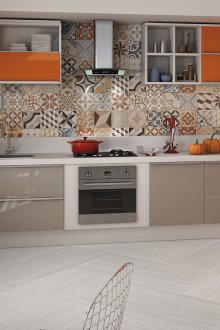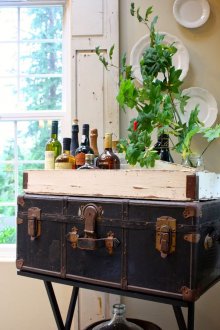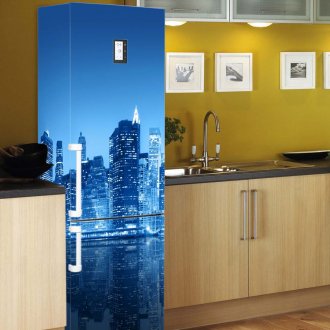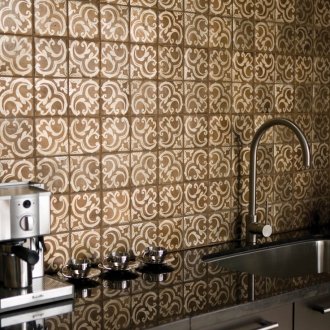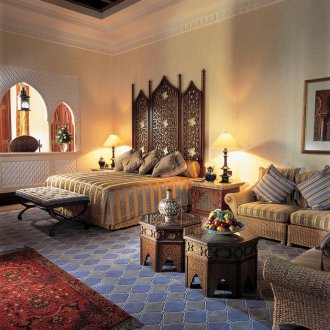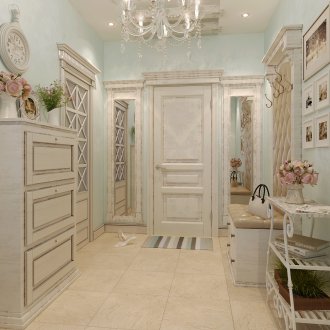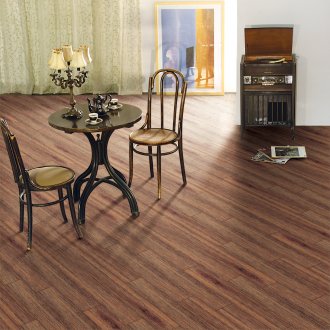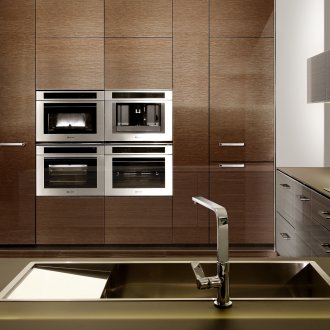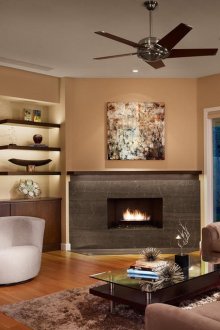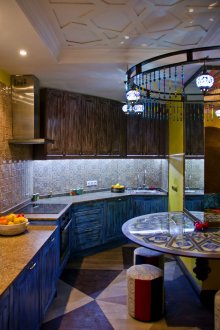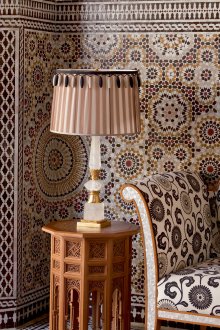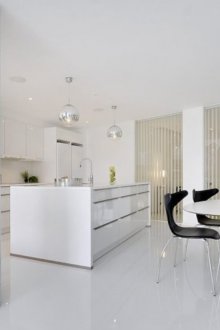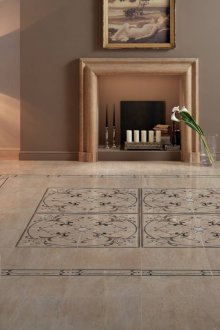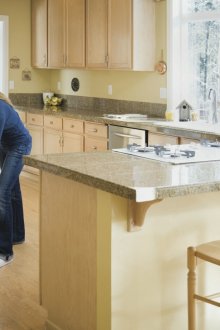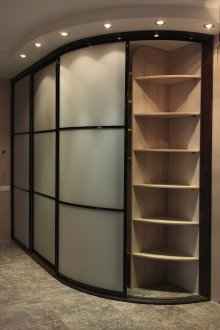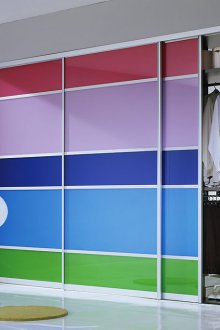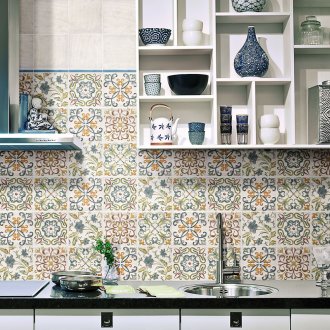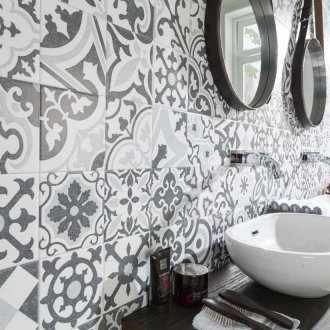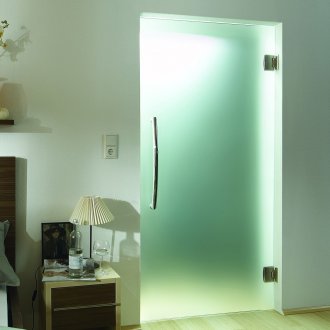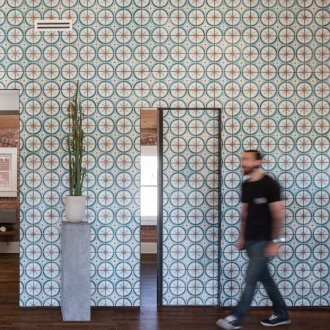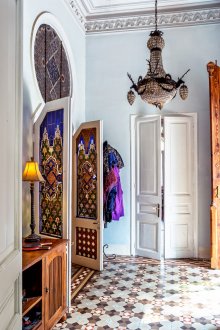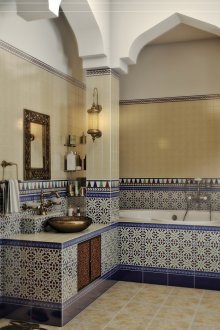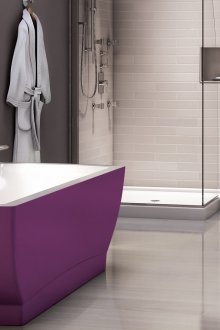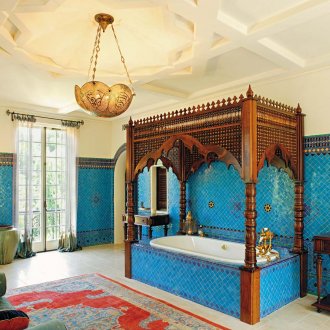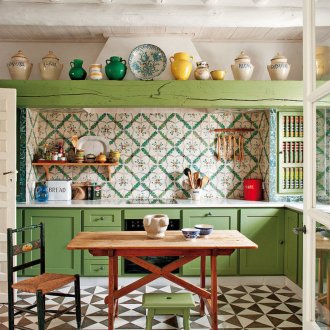Moroccan tile in the interior: the elegance of oriental forms (27 photos)
Content
Moroccan style is fraught with oriental identity, recalling all the subtleties of interior design, where there is a smell of spices, ground coffee and tobacco. Moroccan tile attracts special attention, which is striking in its diversity, imagination and unusual appearance. For many years, with its help, the most unusual rich houses were decorated not only in the east, but also in Europe. True connoisseurs of patterns and oriental ornaments laid out with her any rooms and rooms, regardless of their purpose and future functionality.
History of the manufacturing process
To this day, some ancient manufacturing techniques are used in the manufacture of Moroccan tiles. The first masters who created such tiles studied this craft for at least 8 years. They learned to combine mosaic and hand-painted correctly.
Such painstaking and lengthy work was greatly appreciated, considered exclusive and gave a high price for it. Then Moroccan tiles were made only by hand using clay and multi-colored enamel for decoration. Tiles could have different shapes and sizes. It could be hexagons, squares, rhombuses, triangles and even crosses.
First of all, the craftsmen made a certain number of blanks for future work. Then they were skillfully designed and painted in the necessary colors. At the third stage, the tile was covered with enamel and allowed to fix it. Then, finished products of perfect shape were cut, which were eventually laid out on the floor or walls according to a conceived pattern or mosaic. They were fixed in this position using a special solution of liquid clay. The finished tile in the Moroccan style served for a very long time and was the main element of decoration, luxury and wealth in every home.
Tile feature
Moroccan tiles and the style itself today have combined many forms, colors and textures. It combines European, African, Arab and Berber cultural motifs and historical threads. At that time, the French and Spaniards had a great influence on this style, who today with great pleasure use this material to decorate houses of the most diverse styles.
The main focus of all patterns is the correct geometry, although you can find images of natural elements, animals, and even people. There are also fantastic abstractions, space compositions, futuristic elements of nature and colors.
Today Moroccan tile is versatility and practicality. It is decorated with kitchens, bathrooms, bedrooms, corridors, balconies and living rooms. It can be laid out both with large canvases and small scattered elements in the form of several tiles. This is a good material in the interior, which can be used when designing a room of a completely different style or culture.
Moroccan style tile application
Moroccan tiles in the interior today are used by connoisseurs of unusual styles, which came, for example, from the east. The peculiarity of such trends lies in the fact that they can combine a large number of techniques, stylistic techniques and different materials. At the same time they look interesting, modern and stylish.So, for example, Moroccan-style tiles are used in rooms where there is a riot of bright colors or, conversely, there is a monophonic type of room decoration.
A wide variety of patterns, ornaments and colorings, make this material the basis in the room, playing the role of the main point of decor in the room.
This oriental tile can also become an unobtrusive canvas on the floor or any wall, decorating and complementing the overall appearance of the room. The tile is perfect for a room of any functionality, but it is especially often used in the kitchen, where there is a special atmosphere consisting of aromas and delicious smells of food and drinks. Most often, it is used by housewives who have an amazing taste for decorating an apron in the kitchen. Moroccan tile fills the interior of the kitchen with bright colors, combining perfectly with plain furniture sets.
If in eastern houses tile is present everywhere and in large quantities, then it is important for us to know the measure and put it really within reasonable limits and in clear areas of the room. For example, such a tile will look very colorful and unusual on a fireplace or stove. Our designers so far prefer to decorate with such tiles only small corners in the house or use it mainly as a floor covering. Moroccan tiles can be combined and do not lay out the pattern, unlike mosaics or traditional tiles with patterns.
Material benefits
Tiles from Morocco have a number of advantages that are so often needed when decorating a room. They look like this:
- Moroccan tile is a completely environmental material;
- it is durable and resistant even during the longest operation;
- facing material is unpretentious when laying and further care;
- tile is quite affordable;
- It has an interesting and unusual appearance.
All these advantages make Moroccan tiles demanded and popular in our time. Its brightest shades: blue, green, red, black and yellow, can perfectly combine and complement other shades that are used in the interior. Especially advantageous is this combination can be used in the kitchen and in the bathroom.
